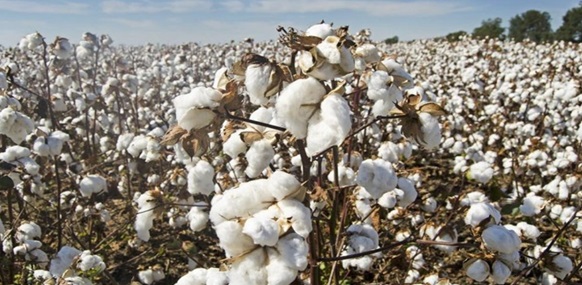Why in the NEWS?
- Union Finance Minister Nirmala Sitharaman announced a five-year mission to improve cotton productivity and sustainability and promote ELS cotton varieties in the Union Budget.

What will you read next in this topic?
- What is Extra-Long Staple (ELS) Cotton?
- Global Production of ELS Cotton:
- Advantages of ELS cotton:
- Reasons for lack of cultivation of ELS cotton:
- Challenges for ELS cotton cultivation in India:
- Possibility of improvement from Cotton Mission:
What is Extra-Long Staple (ELS) Cotton?
- Cotton varieties are classified based on the length of their fibres. These include long staple, medium staple, and short staple cotton.
- Most of the cotton grown in India is from the Gossypium hirsutum species, which has a fiber length of 25-28.6 mm and falls in the medium staple category.
- On the other hand, extra-long staple (ELS) cotton has a fiber length of 30 mm or more.
- It comes from the Gossypium barbadense species, commonly known as Egyptian cotton or Pima cotton.
Global Production of ELS Cotton:
- ELS cotton is grown mainly in China, Egypt, Australia, and Peru.
- In India, ELS cotton is cultivated in a few places, such as some rain-fed areas in Sangli district of Maharashtra and around Coimbatore in Tamil Nadu.
Advantages of ELS cotton:
- High quality:
- The quality of fabric made from ELS cotton is high. The fabric is light, strong and smooth.
- Popularity among brands:
- Top textile brands use this variety as it offers better quality.
- They blend ELS in medium staple cotton to improve the quality.
Reasons for lack of cultivation of ELS cotton:
- Low production:
- ELS cotton yields only 7-8 quintals per acre, while medium staple cotton yields 10-12 quintals per acre.
- This is a major reason why farmers hesitate to adopt ELS cotton.
- Difficult to sell at premium prices:
- ELS cotton is of high quality, but farmers have problems selling their premium produce at a reasonable price.
- The required market linkages are not easily available.
- Threat of pests and diseases:
- Pest and disease attack is also a major problem during cultivation of ELS cotton, affecting production and quality.
- Lack of technology:
- Cultivation of ELS cotton requires the highest science and technology, but it is not properly accessible to farmers.
- Apart from this, the use of GM (genetic modification) technology is also an important step, which has not yet been widely implemented.
Challenges for ELS cotton cultivation in India:
- Low yield:
- The per acre yield of ELS cotton in India is much lower than in other countries.
- For example, Brazil has an average yield of 20 quintals per acre and China has 15 quintals. In India, this number is quite low, which hinders the progress of cultivation.
- Lack of smart agricultural technology:
- Farmers are not able to benefit from better seeds, timely agricultural advice and latest technology.
- Due to this, the problems in farming increase further.
- Illegal seeds and technology:
- Farmers of Maharashtra have been demanding for a long time that they should be allowed to cultivate HTBT cotton (herbicide-resistant), which is currently illegal.
- This can help in weed management.
Possibility of improvement from Cotton Mission:
- Under the Cotton Mission, Finance Minister Nirmala Sitharaman has announced to provide the best science and technology support to the farmers.
- Through this, farmers will be exposed to new technologies, which can improve the yield and quality of ELS cotton.
- Adopting GM technology can be a welcome step.
- This will make it easier to deal with pests and diseases and can increase the yield.
- Adopting better seeds and new agricultural techniques can improve the condition of cotton production in India.
- The production of high-quality varieties like ELS can be increased by using biological and genetic technology.
|
Q. Where is ELS cotton mainly cultivated in India?
(a) Uttar Pradesh and Bihar
(b) Sangli district of Maharashtra and Coimbatore of Tamil Nadu
(c) Madhya Pradesh and Rajasthan
(d) Punjab and Haryana
|



